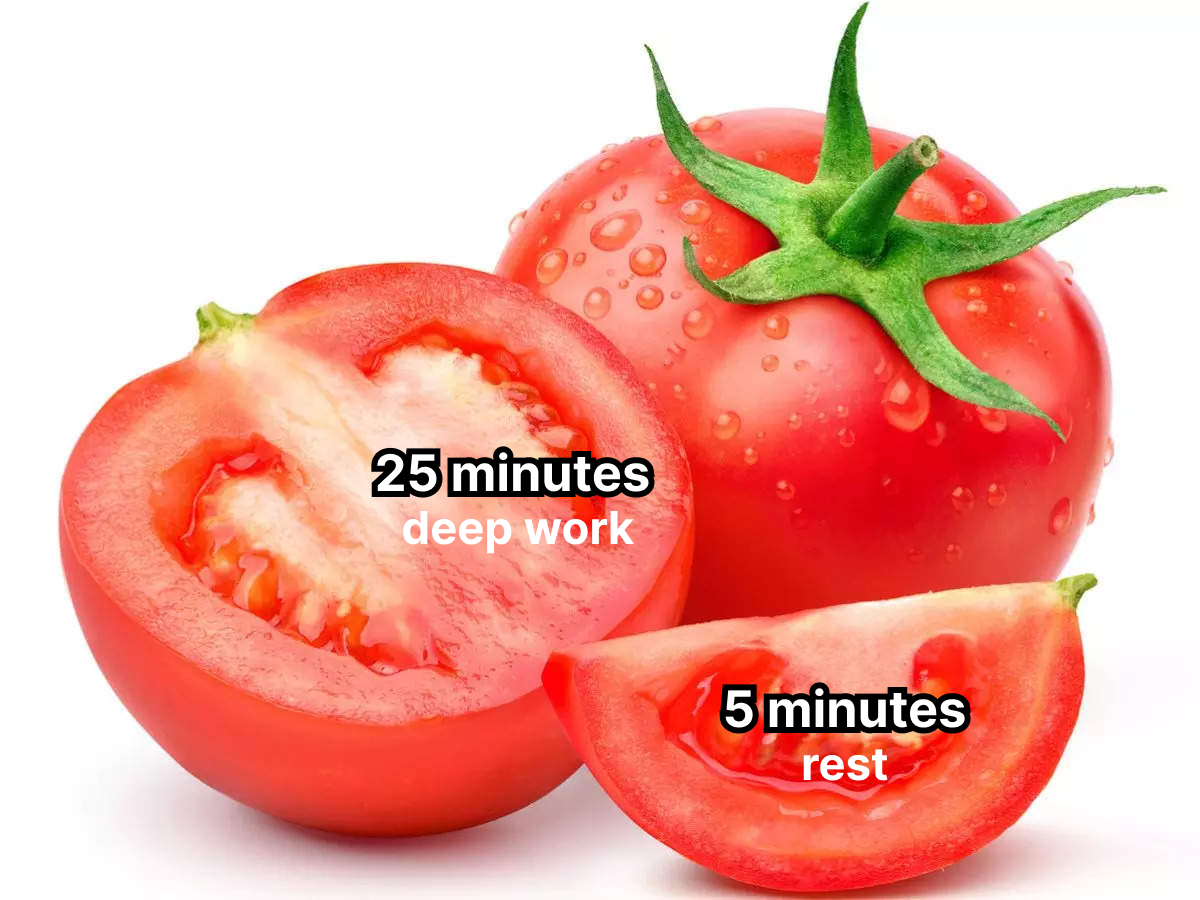Getting things done is hard, and if you thought the solution to your time management problems was a tomato...well, you might be on the right track. Developed by Francesco Cirillo, the Pomodoro technique is a time management method that has gained a lot of traction with productivity experts and newbies alike. What do tomatoes have to do with time management?
We'll explain.
What is the Pomodoro Technique?
A university student at the time, Cirillo was having trouble focusing on his studies. His solution was to break his day into short intervals that he called "pomodoros," after the shape of his kitchen timer (pomodoro is the italian word for tomato).
First, he'd set a 25 minute timer for focused, deep work. This focused sprint was then followed by a shorter interval for taking a break. After a few pomodoros were completed, Cirillo would allow himself a longer break around 15 to 30 minutes.
The Pomodoro Technique is meant to train your brain for focus. By working in short bursts, you can improve attention span and concentration over time.
Regular breaks encourage creativity and bolster motivation throughout the day. The beauty is in its simplicity; all you need is a timer and a to-do list. Here's how to get started:
Decide on a task to be accomplished.
Set a timer for 25 minutes.
Start working on said task.
End work when the 25 minute timer rings, then check it off on your to-do list.
If you have fewer than four checkmarks, take a short break (3-5 minutes), then return to step 2; otherwise continue to step 6.
After 4 pomodoros take a long break, usually 15-30 minutes.
And that's the gist! It's a simple but powerful time-management system that millions of people swear by. It's particularly popular in creative circles where people have to regularly produce creative work, but it can also be effective for repetitive tasks like working through an inbox or queue.

Leveling up your Pomodoro Technique
The Pomodoro Technique seems simple enough but, as with all things, can be difficult to implement in your everyday life. If you find that's the case, here are a few rules you can follow to make it easier to understand and implement:
Pomodoros are indivisible;
if a distraction arises, take your 5 minute break and set the timer for your next interval.
If a Pomodoro timer is set, it must ring.
Take advantage of extra time left over as time to review your work, make improvements and note what you've learned.
Batch small tasks together.
Tasks that require less than one pomodoro should be grouped together.
Break down complex tasks.
Tasks that take more than four pomodoros should be divided into smaller, actionable steps. This will help build momentum and clearly track progress.
Putting it into Practice
You can find any number of cutesy timers online but for the Pomodoro technique to work well, it's important to minimize distractions. We recommend using a Chrome extension called Strict Workflow. In addition to your countdown timers, Strict Workflow lets you block social media and news sites in your browser so you're not tempted to veer off task in the middle of a pomodoro.
As a time management technique, the Pomodoro method shares a lot in common with time-blocking. Both promote focus and attention, as well as separating deep work from shallow work. Whichever method you choose, the goal is the same: make the most of your work time, minimize distractions, and figure out exactly where all your time goes.
